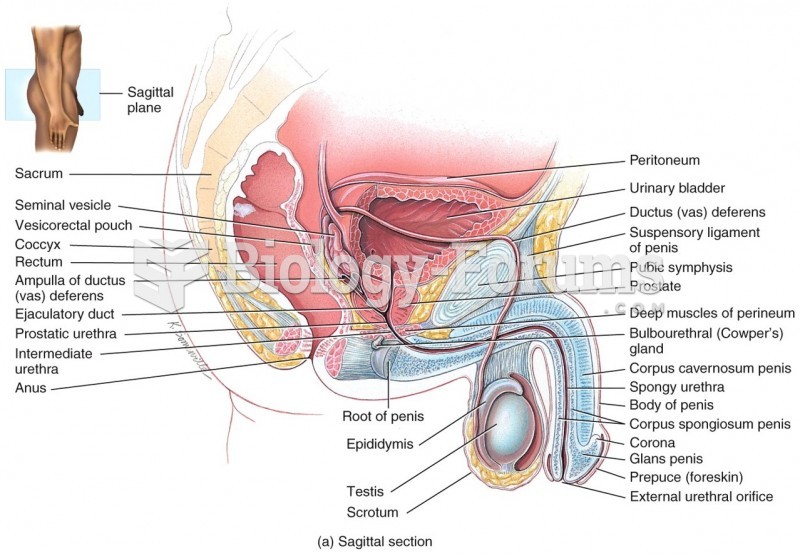Answer to Question 1Horses, rabbits, and chickens are single-stomached animals.
The horse can consume large amounts of forage but is not considered a ruminant animal. It has a small,
single stomach, but unlike other single-stomached animals, it has a large cecum and colon located between
the small and large intestines. Bacterial action takes place in the cecum and allows the horse to digest
roughage material, but not as efficiently as a true ruminant animal. Horses do not have gallbladders. Bile is
secreted into the duodenum directly from the liver.
The rabbit's digestive system is very similar to that of the horse. It, too, has a large cecum that allows for
the utilization of high-quality roughage material; bacteria are present in the cecum and help break down
roughage.
Rabbits and rodents eat their feces. This is referred to as coprophagy and is usually done late at night or early
in the morning. Feces that are eaten are usually light green, soft, and have not been completely digested.
Birds, although considered single-stomached animals, have several different organs in their digestive
systems. Birds do not have teeth, so no chewing or breaking down of food material takes place in the mouth,
although saliva is added here to aid in swallowing. Food material passes down the esophagus, into the crop.
The next step is the proventriculus, where gastric acids and enzymes are secreted to begin chemical digestion.
The food material then passes to the ventriculus, commonly referred to as the gizzard. This is the largest organ
of the bird's digestive system. The primary purpose of the gizzard is to grind and crush food before it enters
the small intestine. The gizzard is composed of a horny, lined structure that is heavily muscled. Involuntary
muscular action serves to break up the food material, much like teeth action in other animals. Some birds,
those that consume seeds and whole grains, are often fed grit in the form of crushed granite, oyster shell, or
other insoluble material that aids in the grinding and breaking down of coarse material.
Food material then passes on to the small intestine. The first part of the small intestine is the duodenum,
where enzymes are secreted from the pancreas to help break down the proteins, starches, and fats. Bile is
secreted from the gallbladder to aid in the breakdown of fats. Most of the absorption takes place in the lower
section of the small intestine.
Birds have two pouches, called ceca, where the small intestine connects into the large intestine. Although
some bacteria are present in these pouches, very little digestion of the fiber is believed to occur here. Food
material passes from the small intestine into the large intestine and then into the cloaca. The cloaca serves as
a common junction for the bird's digestive, urinary, and reproductive systems.
Answer to Question 2(a) The rumen is the largest compartment and makes up about 80 percent of the total capacity of the
stomach. The rumen is where the bacteria and microorganisms act on the food material and where
digestion takes place.
(b) The reticulum is closely associated with the rumen. The reticulum works with the rumen in formation of
the cud for regurgitation. Foreign bodies, such as nails or pieces of wire, can be held in the reticulum for
long periods without causing serious injury.
(c) The omasum removes large amounts of water from the food as it moves from the rumen to the abomasum.
(d) The abomasum functions very similarly to the stomach of single-stomached animals.







